The household deities — part 1
In Hindu traditions, every home has a shrine in front of which, rites and offerings are made in honour of various deities. The altar has one or several statues or images that represent the family’s favourite gods or goddesses.

In Hindu traditions, every home has a shrine in front of which, rites and offerings are made in honour of various deities. The altar has one or several statues or images that represent the family’s favourite gods or goddesses.
Once you cross the threshold of the house, a subtle network of recurring solicitations, repeated tributes and symbols is established. An appeal for benevolence and prosperity is patiently woven day after day. At the same time it takes effective charms to thwart malicious elements that would disrupt the fragile balance of the home. Supplications to various deities take place in order to increase the blessings, but the one that presides over day to day life of the “image-makers” is Lakshmi, the beautiful consort of Vishnu.
Free translation from « Voyage dans l’imaginaire Indien, Kôlam, dessins éphémères des femmes tamoules » Editions Geuthner.



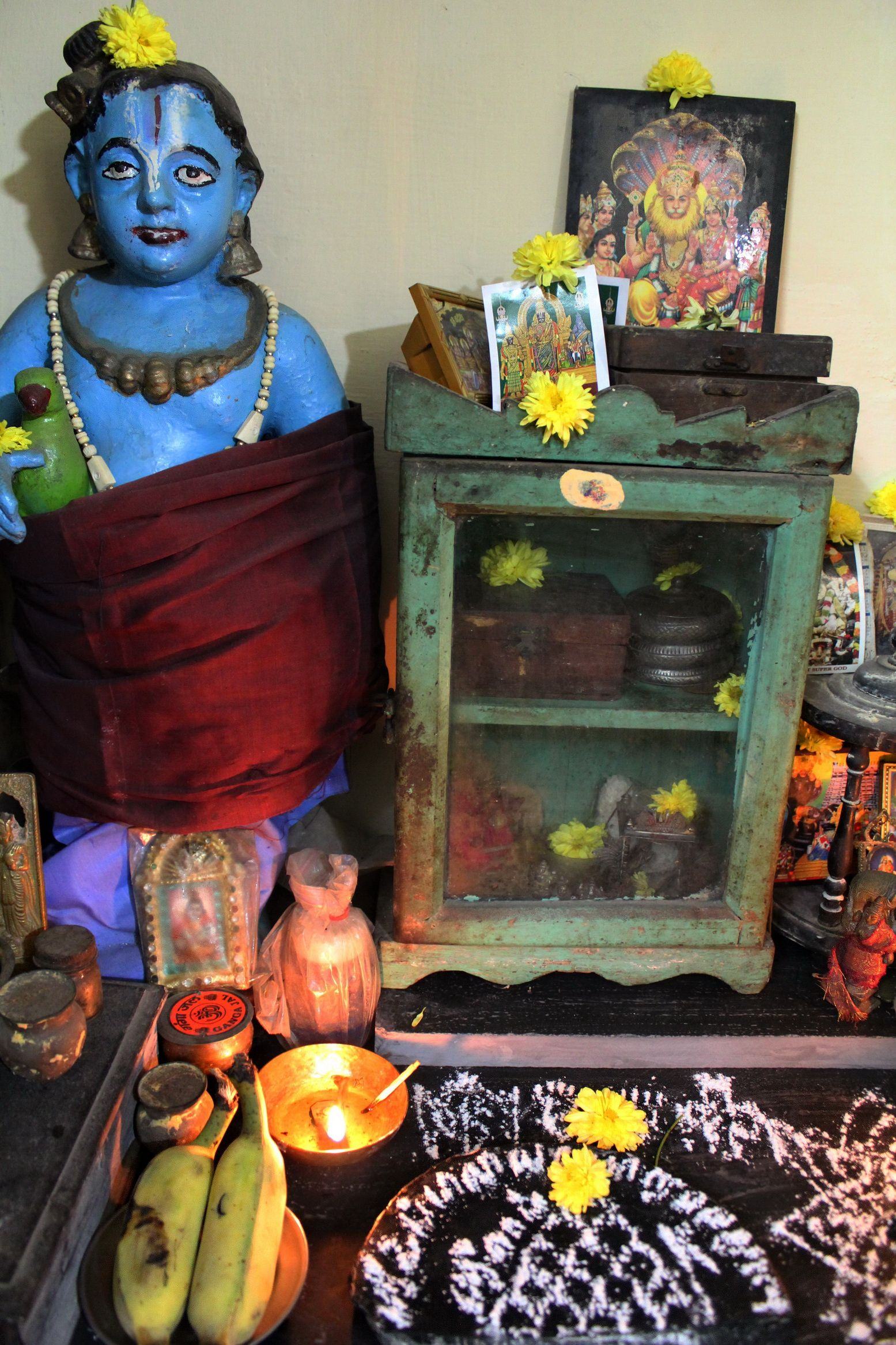
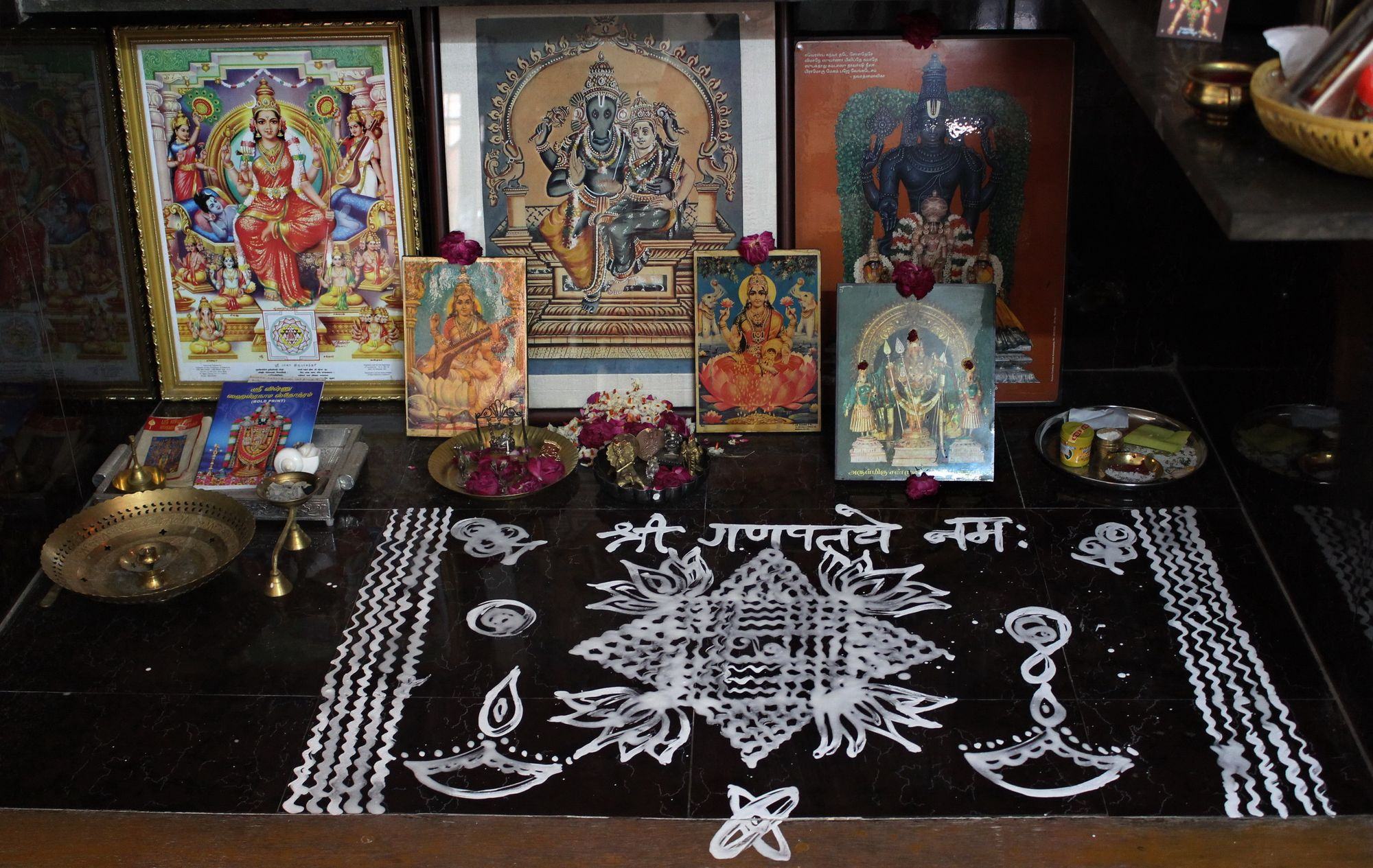
Lakshmi and the housewife, a special complicity
“The goddess Lakshmi, complete with all her attributes, always dwells in the house that always shines as a result of smearing (with cow-dung) and (drawing) auspicious powder designs.”
Stridharmapaddhati by Tryambakayajvan[1]
Lakshmi embodies beauty, abundance, prosperity and marital bliss. Flanked by two elephants showering on her gold coins, Lakshmi is seated or standing on a lotus, and holding in both hands lotuses. Women offer her daily praises and prayers to shun out diseases, poverty, and ill fortune from the family home. The lotus designs symbolises the goddess and sometimes her presence is signified by a drawing of lines suggesting a braid of hair.


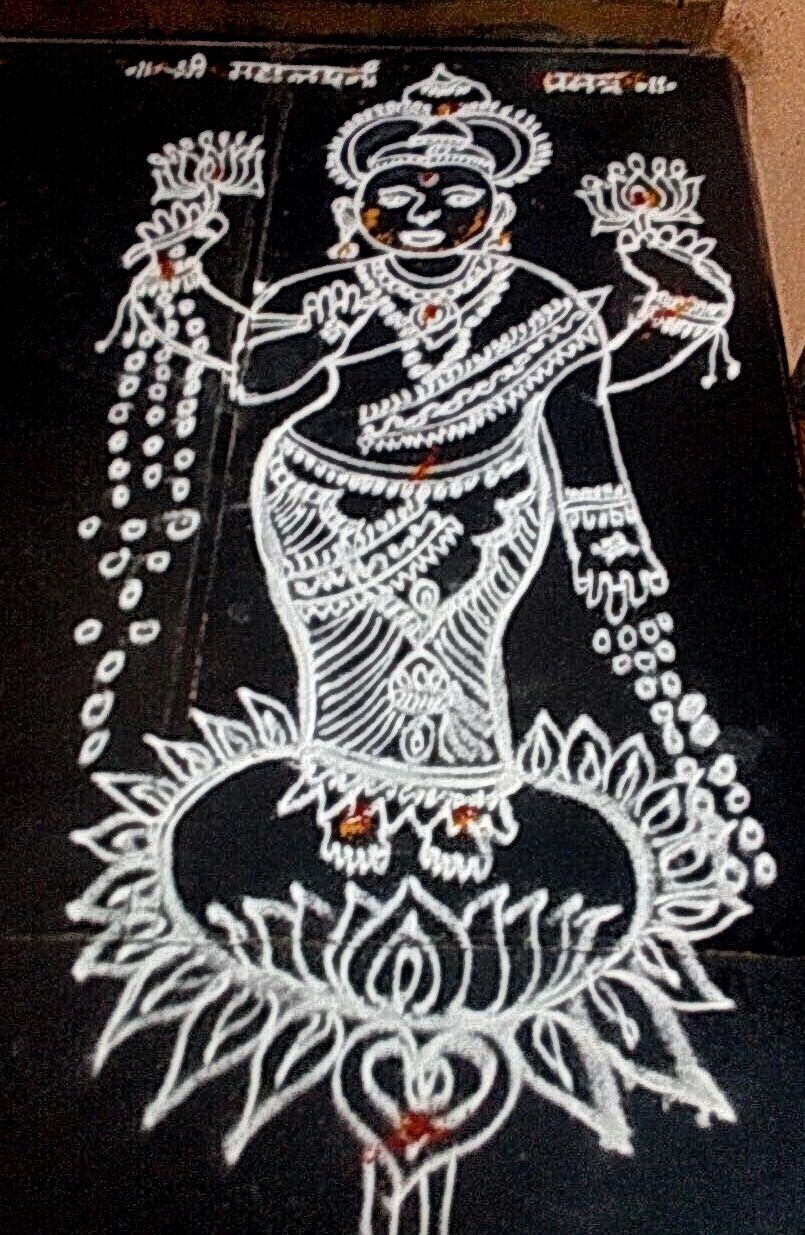
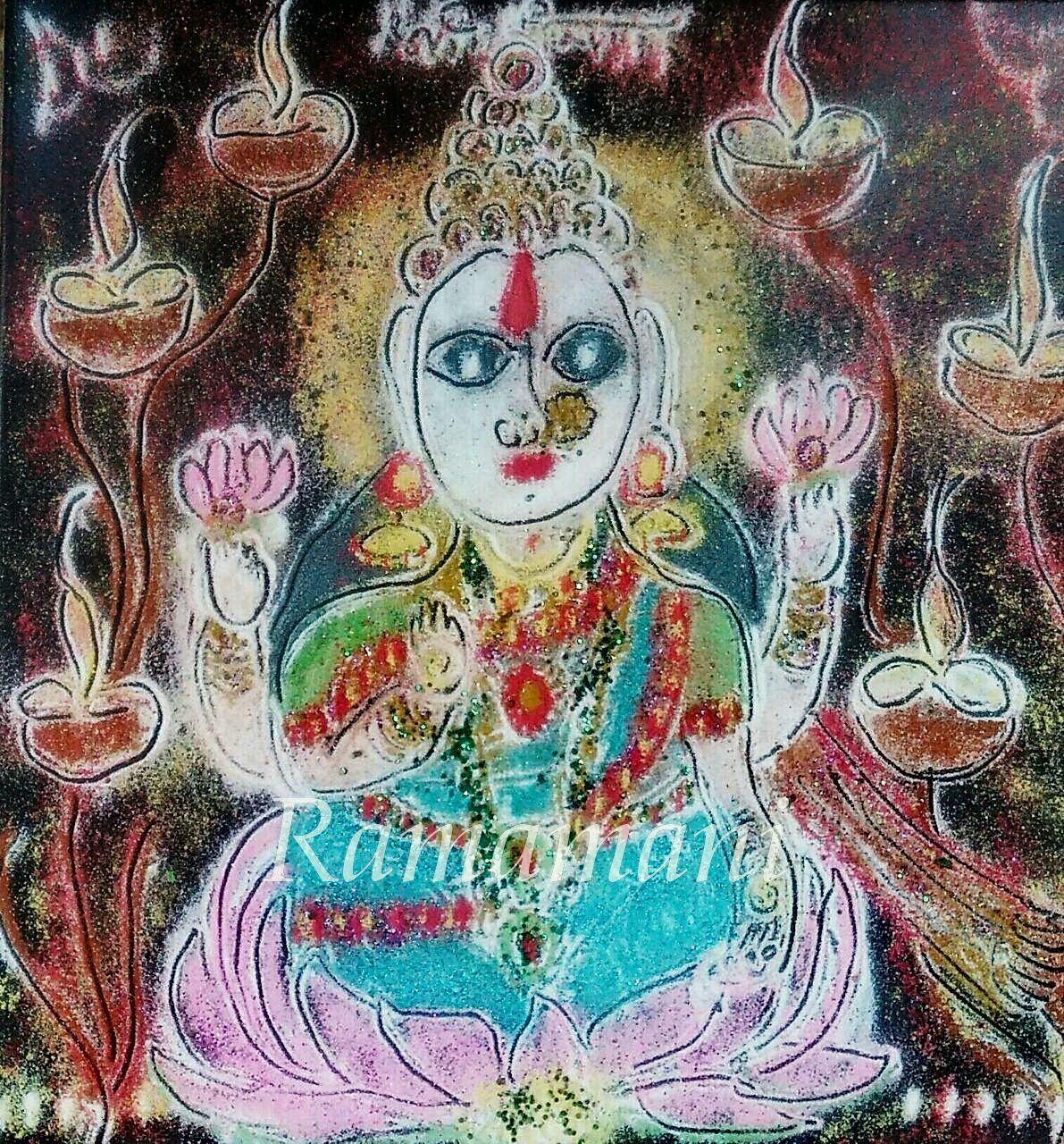
On Tuesday and Friday, Lakshmi is worshipped with even greater fervour. The goddess born from the stirring of the primeval milky ocean resides on the threshold and every Friday, women smear turmeric paste and add kumkumam dots on the doorway. Since her presence here is unassuming and away from domestic preoccupations, she needs to be constantly beseeched to protect and bless the household.
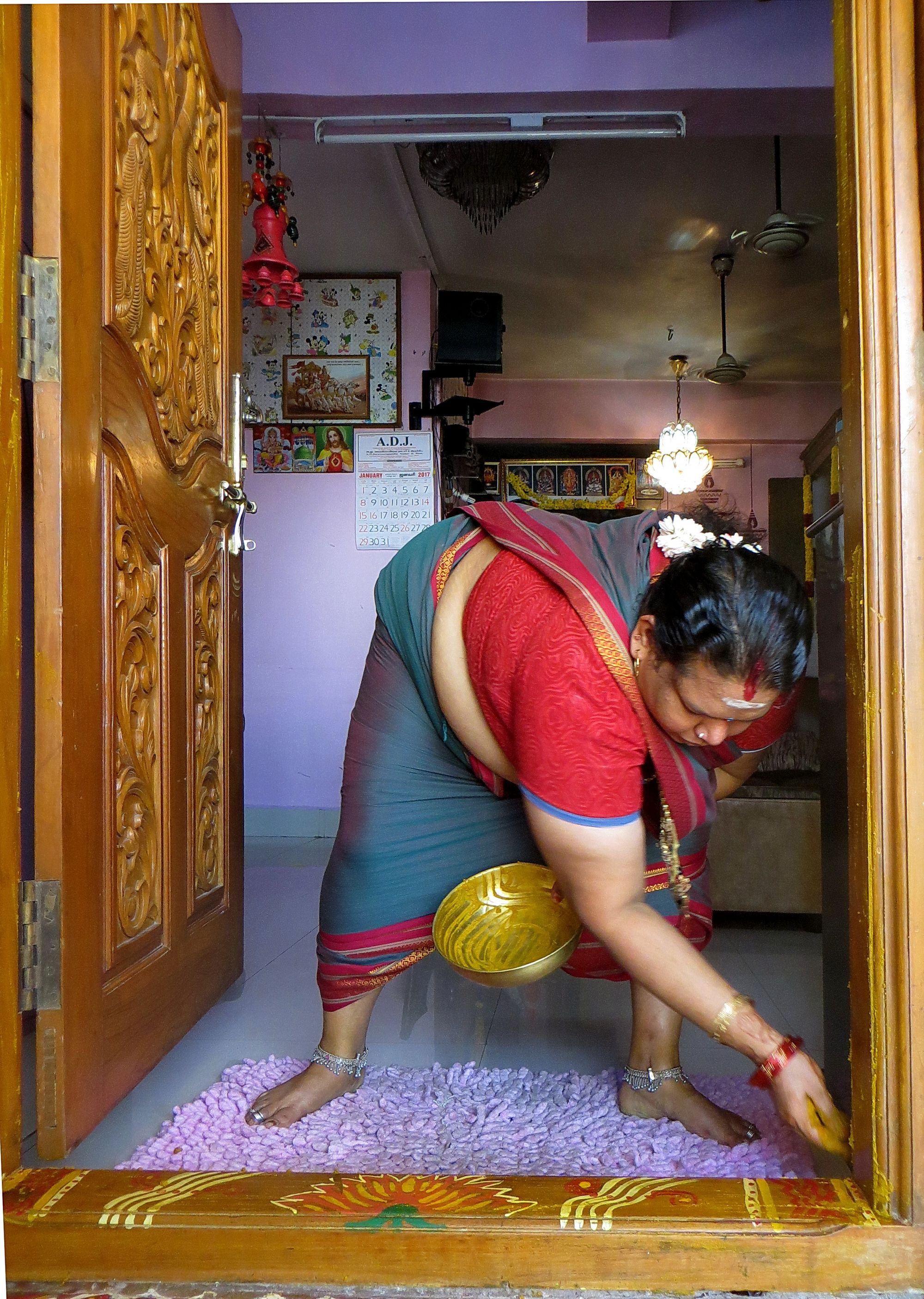
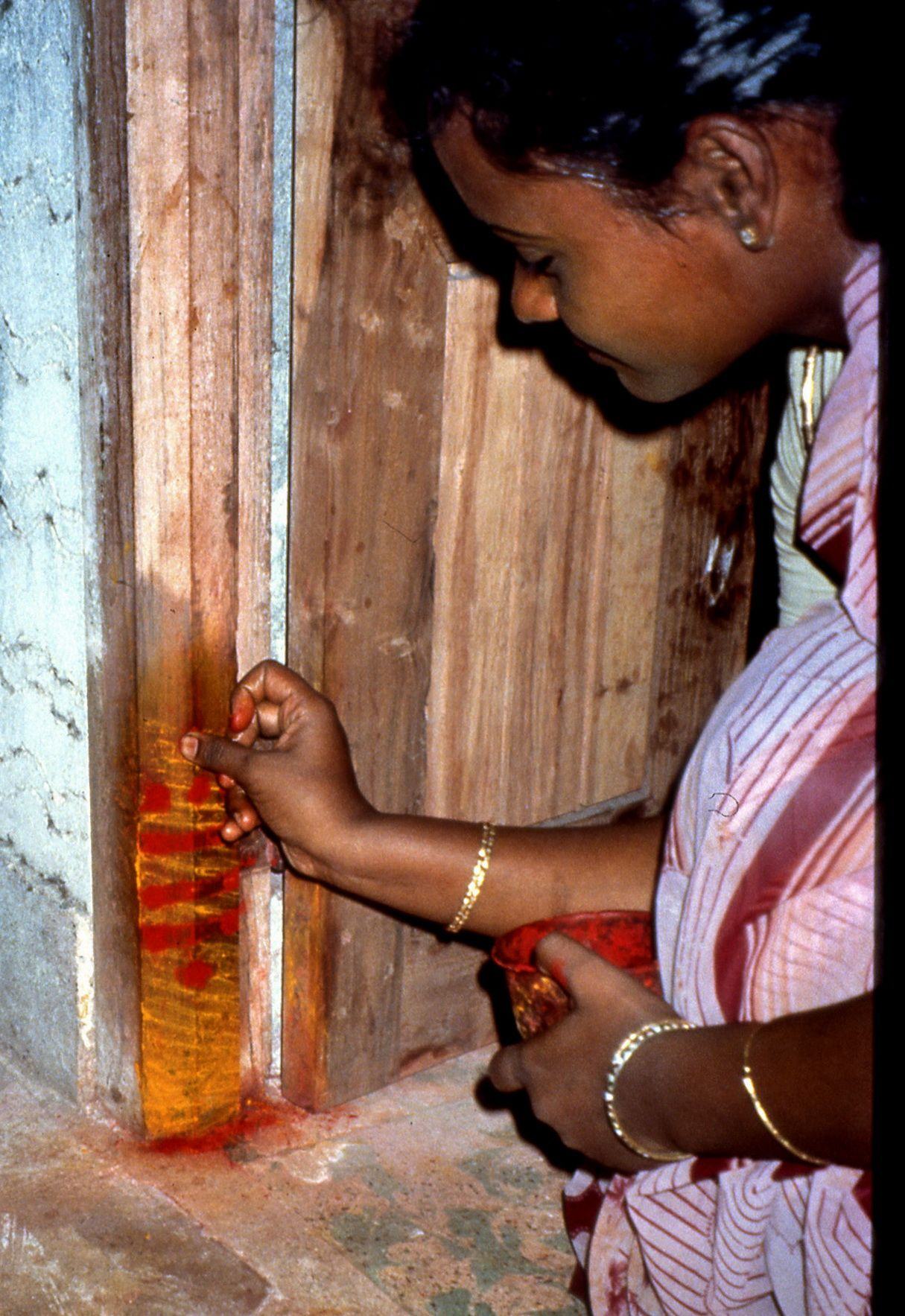
Lotuses in various shapes embody the goddess. Its blossoming shape and numerous petals lend themselves to figurative and stylised representations. In the kitchen oratory, the goddess Lakshmi is honoured with even more fervour on Friday with the kolam called Aiswaria kolam or abundance kolam.
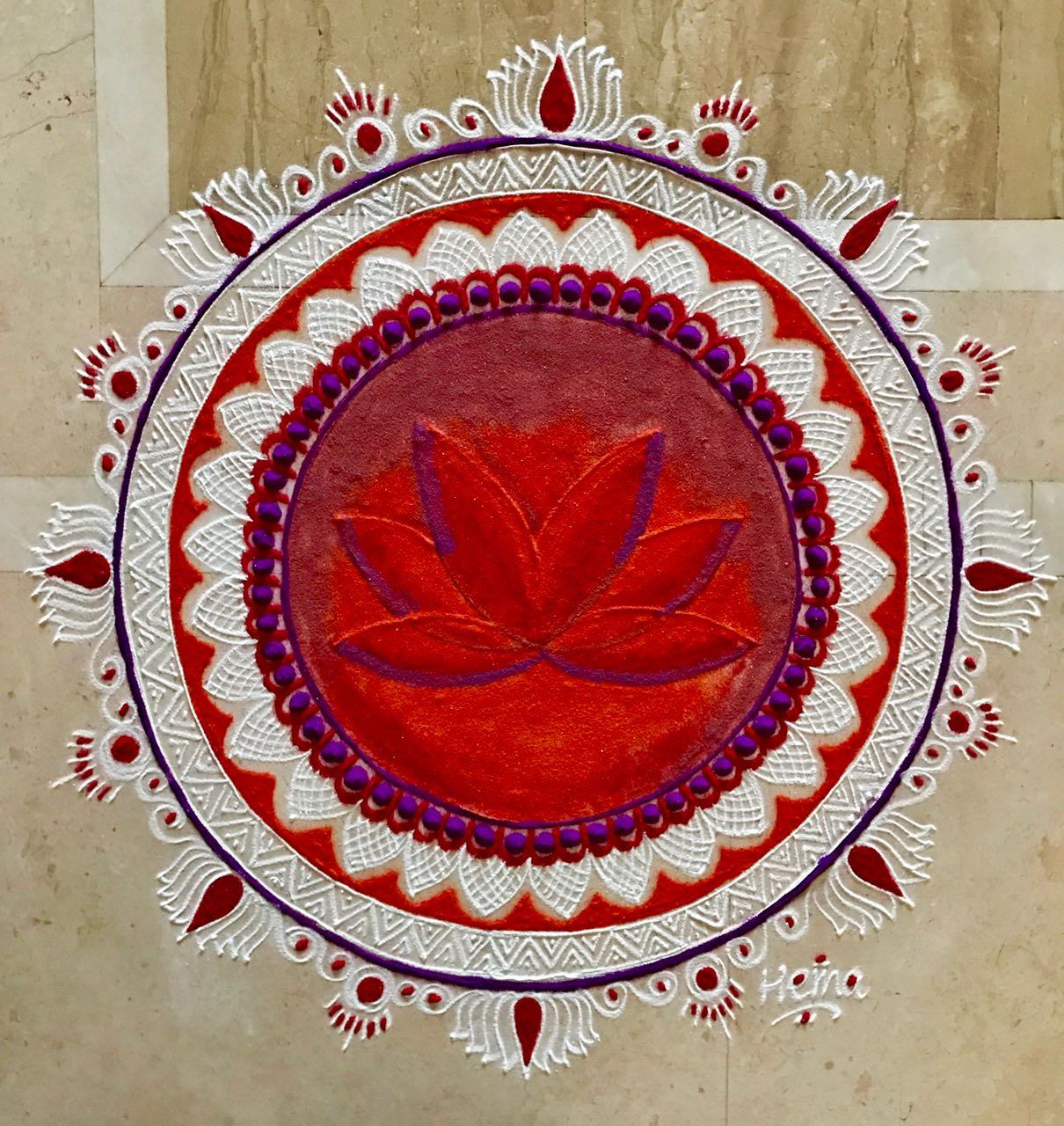
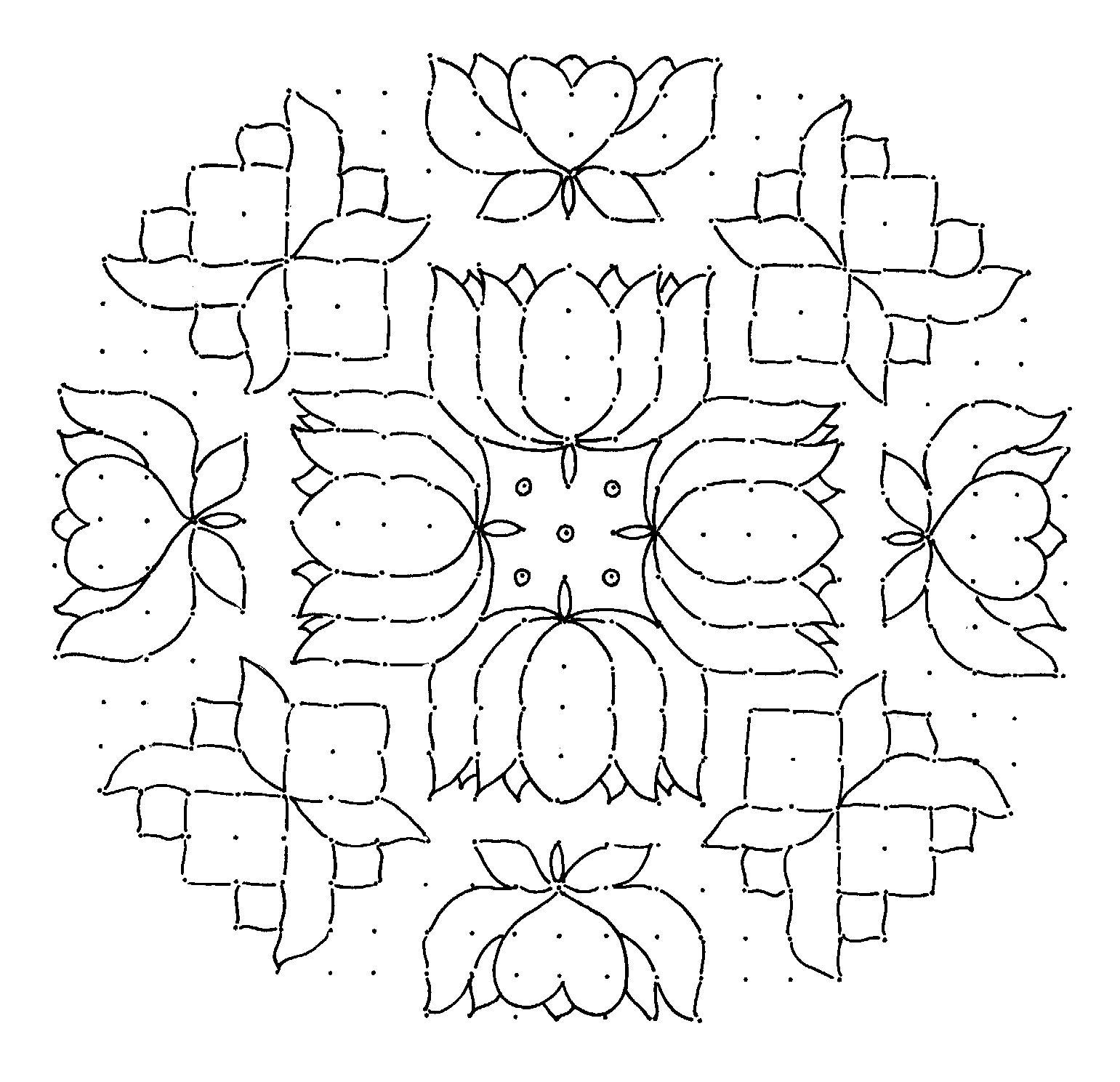
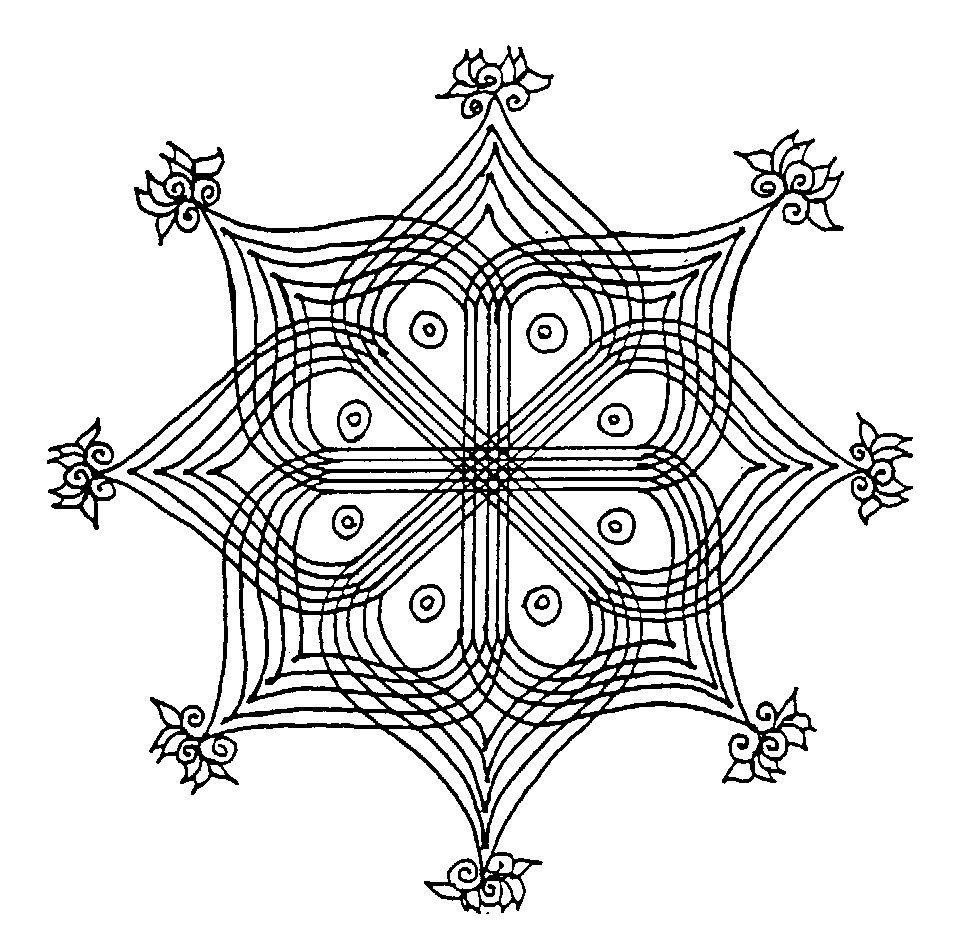
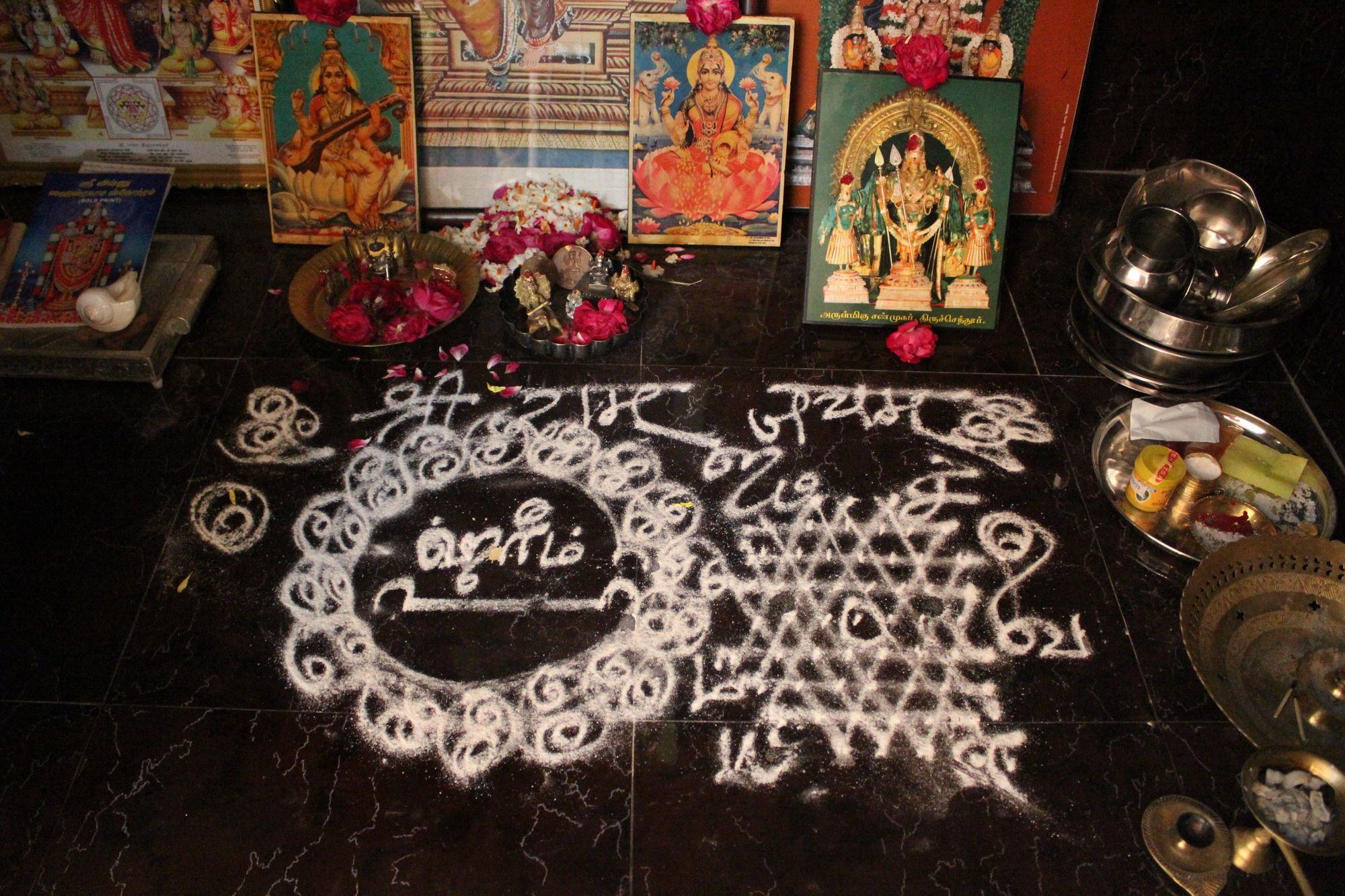

Objects used for worship, especially oil lamps, are placed on a kolam design called Hridayakamalam (the lotus of the heart).
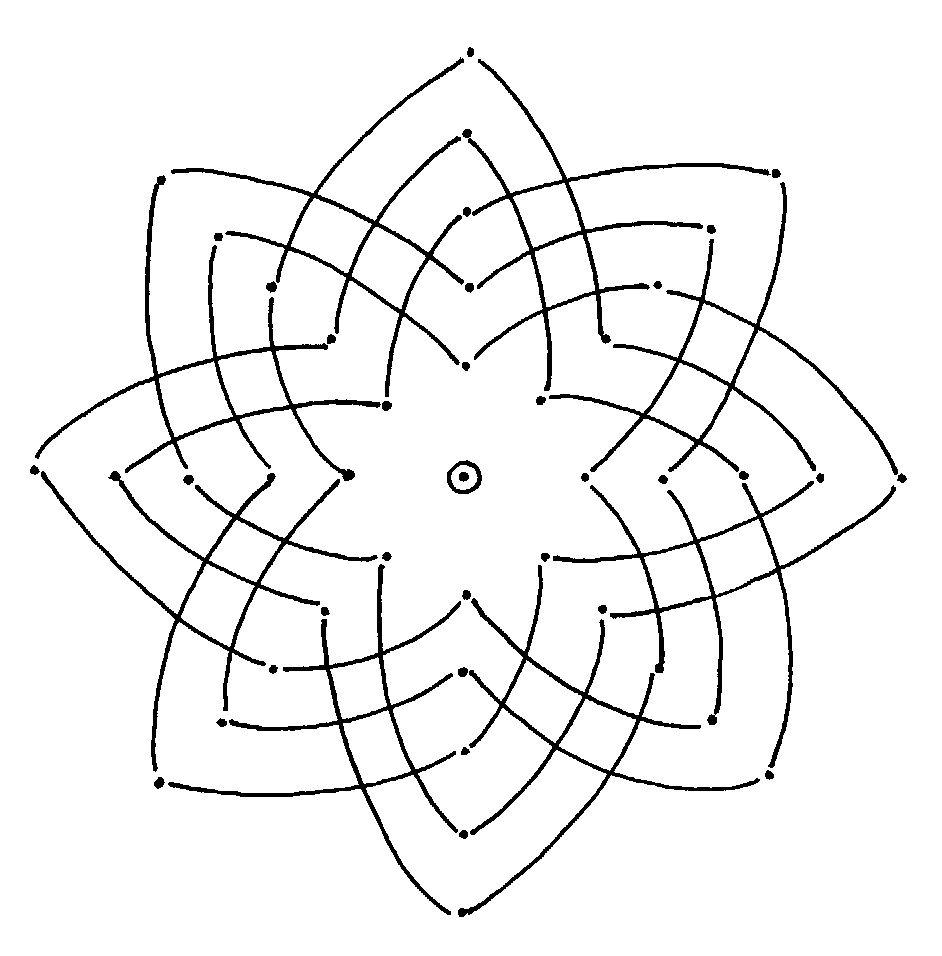
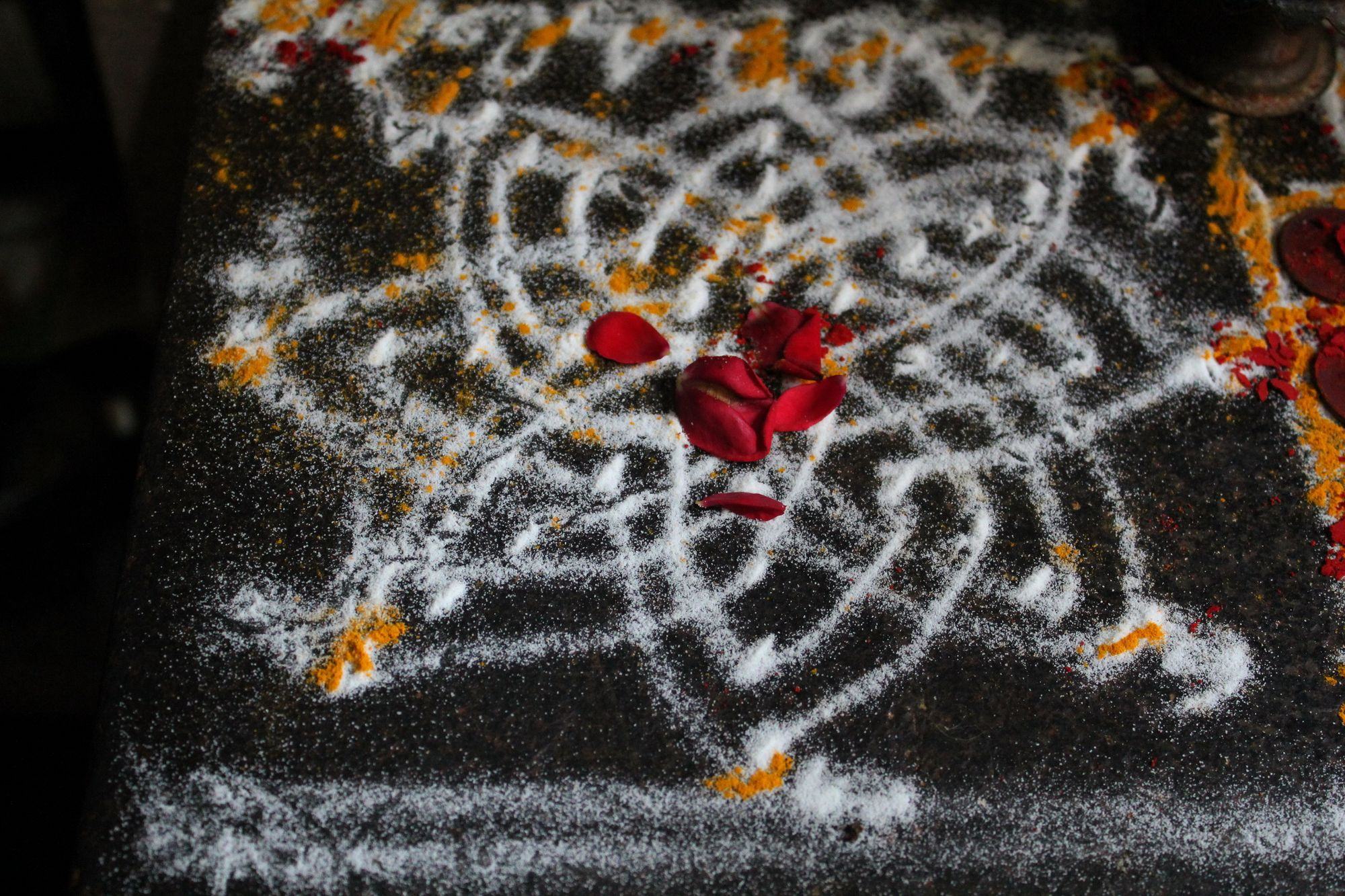
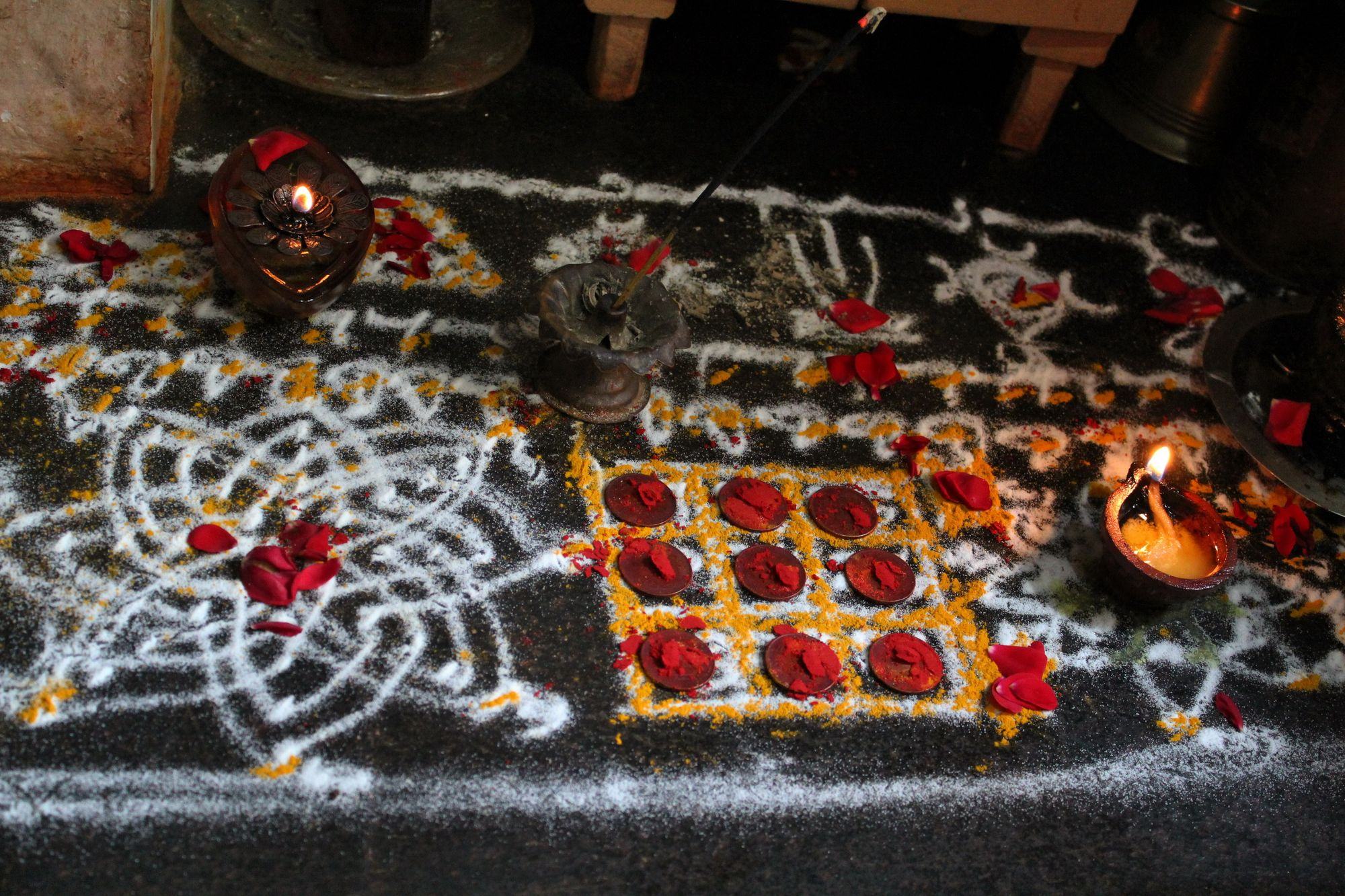
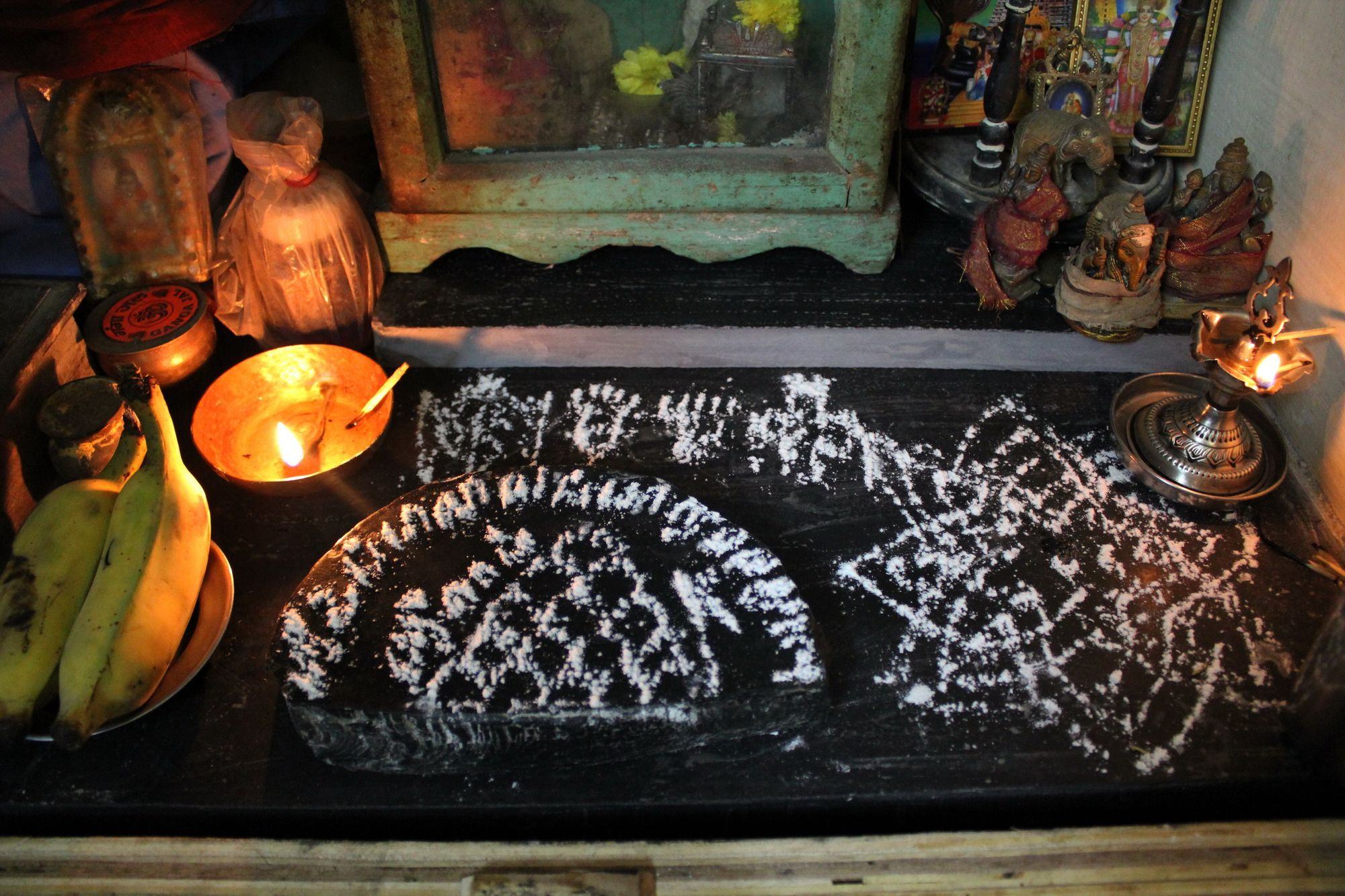
Sometimes, the kitchen shrine is covered in small graphic patterns while prayers are recited.
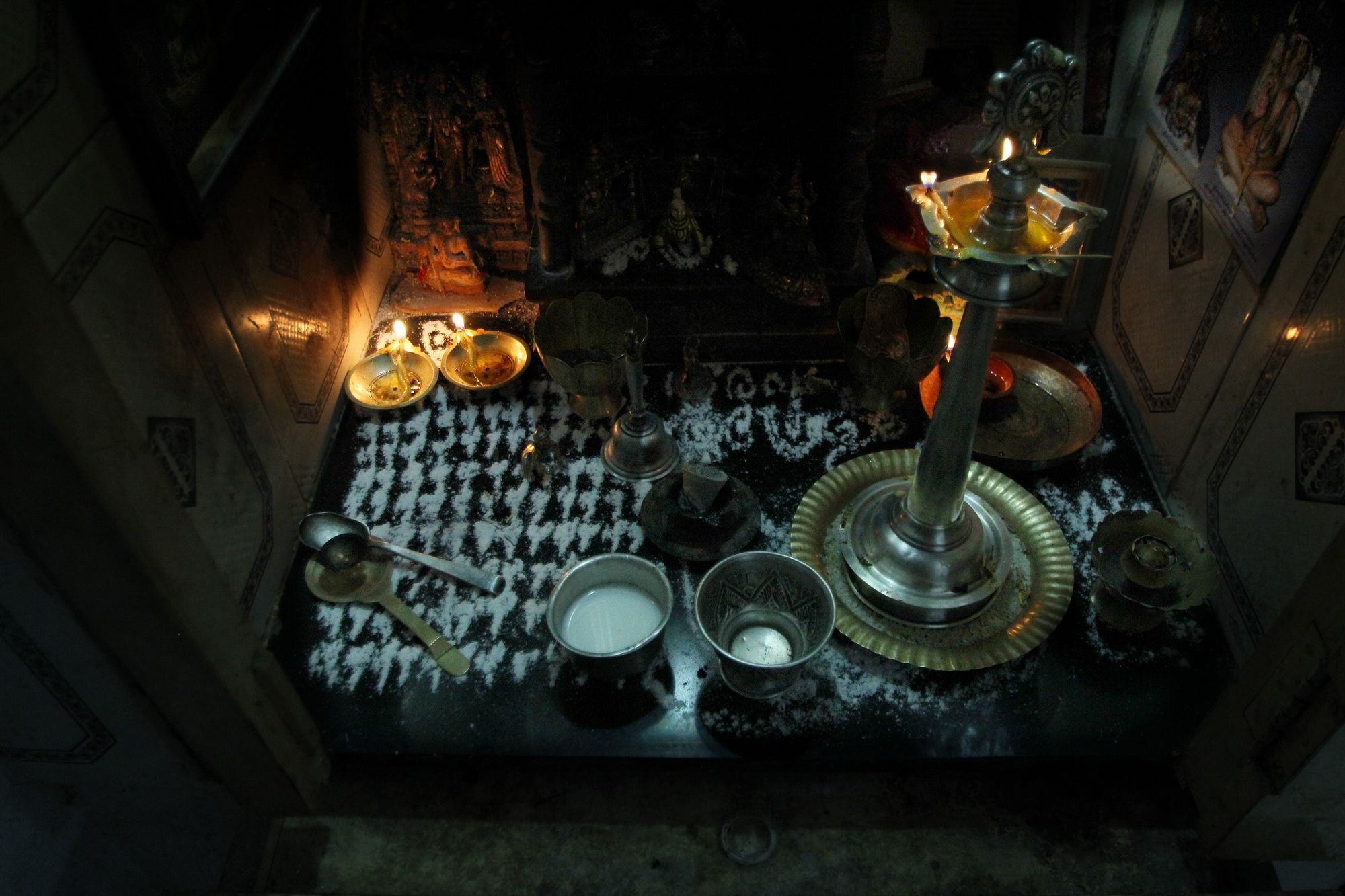
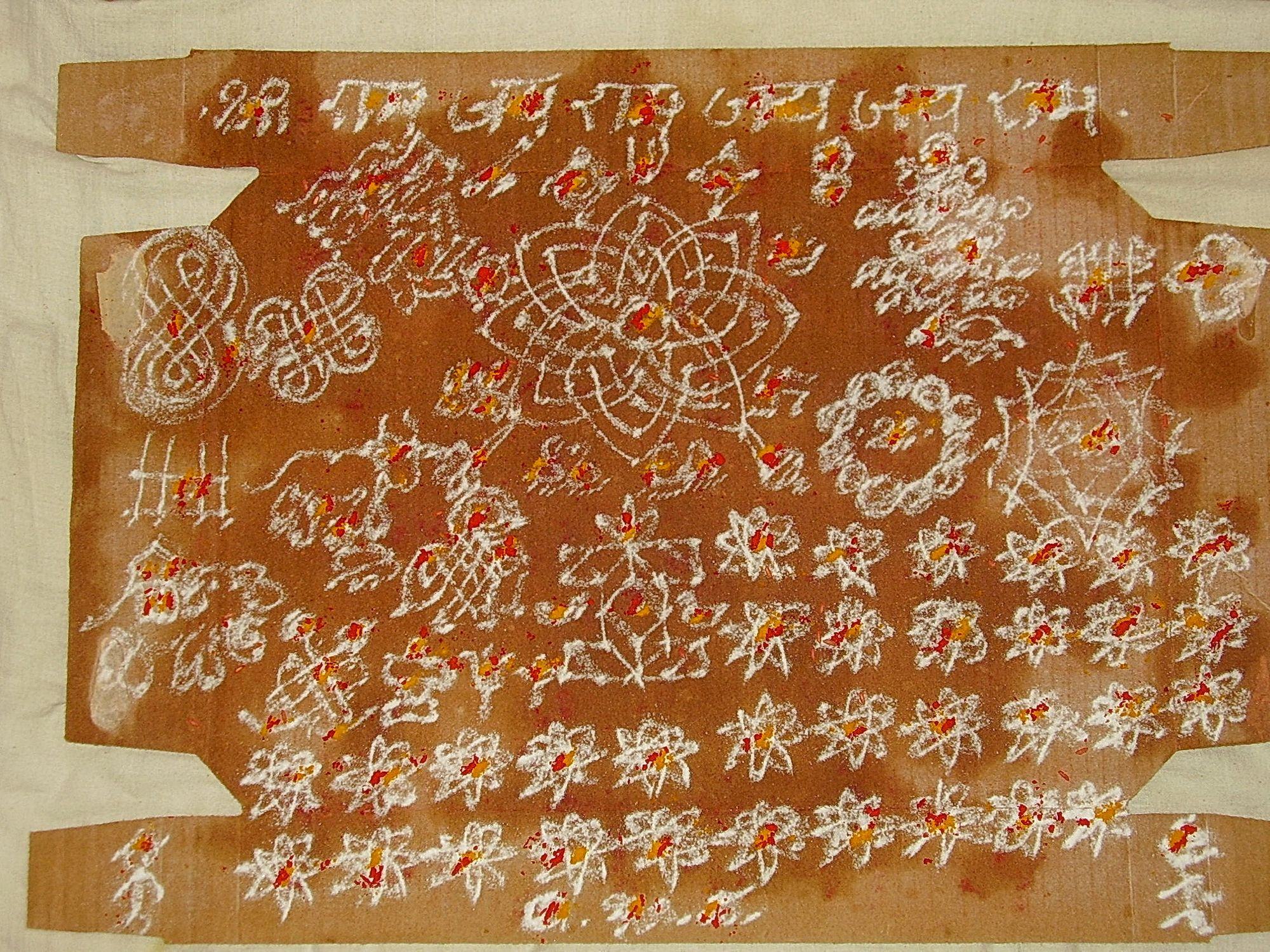
Julia Leslie, The orthodox Hindu woman according to the Stridharmapaddhati, Delhi Oxford University Press, 1989
